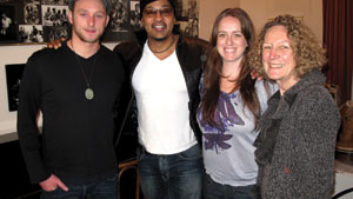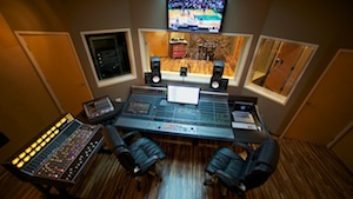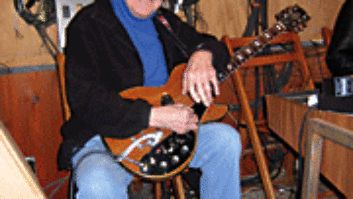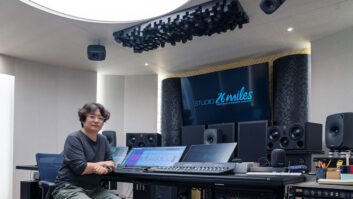Mix’s January 2008 “Project Studio” column profiles Andy Scott, who owns and operates Studio 401 out of his home in San Francisco, where he records, mixes and masters local indie artists and bands. However, Scott’s studio work is only one aspect of his business; he also provides a range of live and field recording services for clients, taking his rig to local clubs and venues of all types, as well as traveling internationally for special projects. He also mixes and masters live projects in Studio 401. For this exclusive MixLine story, Scott shares his personal approaches to live recording and field recording.
What sort of recording rig do you take with you into clubs?
This is really a constantly evolving rig, but I try to be ready for anything, and I try to do as much pre-production [planning] as I possibly can. The more pre-production you can do, the better. But I have a couple of different things that I use. I have the Sony PCM-D1, which is just an amazing stereo recorder—just the quality of the mics and the preamps, and the depth of the whole stereo field is just amazing. I also have a mobile Pro Tools [M-Powered] rig. I just upgraded to Version 7.4. I use that in a Sony Core 2 Duo laptop, and it’s fully optimized for audio. The M-Audio 1814 is my Pro Tools interface. I have a PreSonus FireStudio as my main front end, and I feed that [via] Lightpipe from there. The FireStudio gives me eight direct outs to the house for cue mixes or headphone feeds—whatever I need.
But when I do live work with a live sound engineer—and I have a partner I’ve been working with a lot lately [bass player Ray Schaeffer]—we have a setup going where I feed the outs to him, so we actually come through the recording rig through Pro Tools—it’s pre-fader—and then we send it back out to the house mixer. We find that that works really well so that they can operate independently. The 1814 also enables me to bring in another eight analog inputs. I just add various preamps as I need them. One of the mobile preamps that I like a lot that fits in the rack nicely is the PreSonus MP20. I also use the Joemeek VC1Q. It’s great for vocals, and it’s great as a direct box. Then I also use a couple of Radial J48 active direct boxes, which are just killer—they’re so clean. I rack it all up in an eight-space rack, and I also use an external flat-screen monitor. I use a range of different mics depending on what I need for the situation.
Of course, live recording presents numerous variables.
I always have to adapt to the room. There are always unpredictable [factors] in a live situation—the room, the audience, lots of different things. So I set up the stage in a way that allows me to control the sound as best as I can. When you’re doing a multitrack recording that you’re then going to bring back into the studio, it’s so important to get as much isolation as you realistically can onstage.
In January 2007, you traveled to Argentina to record local artists for a project in diverse locales. What were your experiences there?
The goal there was to produce a CD of indigenous artists in northwest Argentina, in the province of Salta, which is about two-and-a-half, three hours by plane north of Buenos Aires. And it’s very different from Buenos Aires, which is a European type of big city; this is way up in the wilds, almost up in the Andean foothills, and it’s very much a non-European culture. It’s beautiful country—farmland, mountains and rivers. So I brought the Pro Tools rig with me in a rack. I carried all of my valuables, like the mics and the computer, in a backpack. I recorded some stuff in a farmhouse that I converted into a mobile studio, so I had a tracking room and a control room. I hung curtains and moved things around, and that kind of stuff. Artists came in there and we recorded them, and a lot of times we were there until four in the morning. It was crazy. We also went in the four-wheel drive and drove in all these little towns in the backwoods, and recorded musicians everywhere from [a] stone quarry to hotel rooms to back patios. We had a few people we recorded in a music store, where the guy specialized in making lutes and all kinds of different indigenous instruments—different kinds of Andean flutes and pan pipes. Being there was very exciting. The other thing that was important was to make sure I brought a few extra hard drives with me, so everything was backed up immediately. Your worst nightmare is, you go all that way and you lose the stuff!
For more information on Studio 401, visit www.thestudio401.com or www.myspace.com/thestudio401 .




